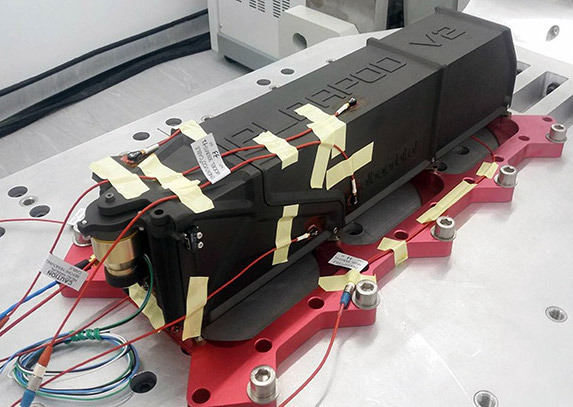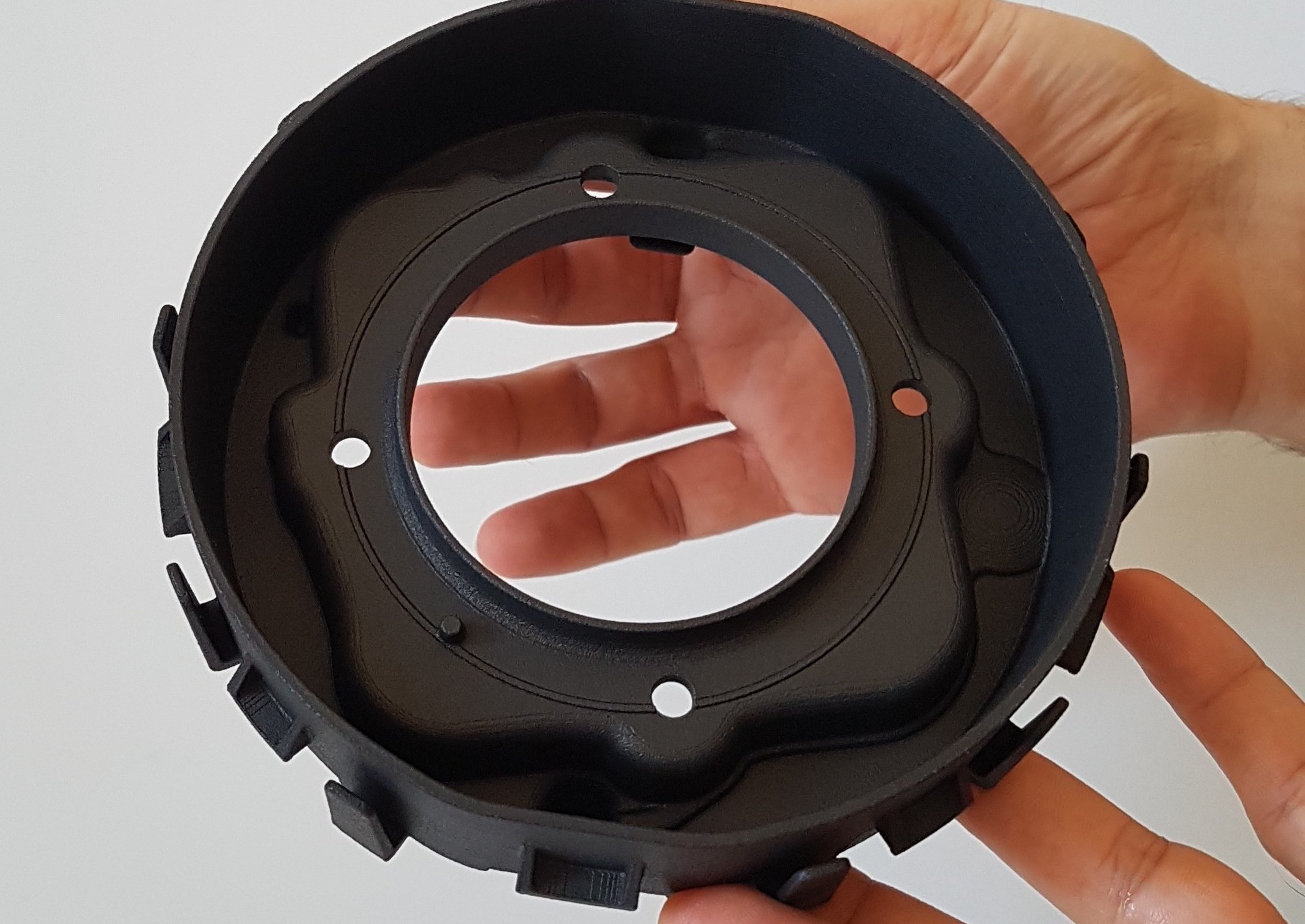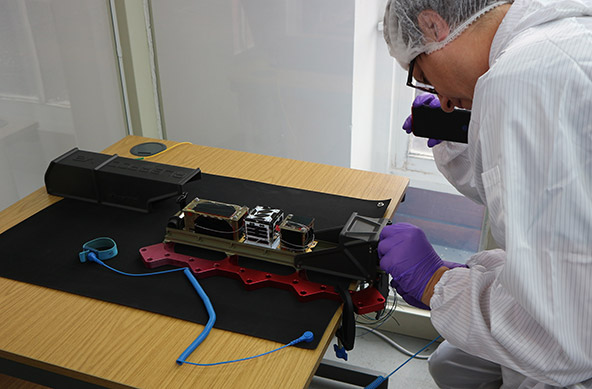China3D printingNet October 15th,3D printingMaterials and service provider CRP Technology has deployed its proprietary Windform TOP-LINE series of polymers to manufacture a series of nanosatellites and PocketQubes for customers in the aerospace industry.
The company’s powder form3D printingThe material has a long history, has been used in the racing industry, and is now increasingly being used by companies with space ambitions. CRP Technology and its partner CRP USA, in collaboration with aerospace companies Alba Orbital and Mini-Cubes, recently took advantage of the enhanced thermal and mechanical properties of Windform XT 2.0 to create a series of optimized pocket satellites and deployers.
Now, with the three products of Alba Orbital’s next miniature device being launched in December 2020, Franco Cevolini, vice president and CTO of CRP Technology, explained the benefits of using Windform in production.
Cevolini explained: “Unlike many technologies that were originally used in aerospace and later applied to motorsports, Windform XT 2.0 is a material driven purely by motorsports. Now, Windform XT 2.0 and all Windform composites It has been used in the most advanced industries to manufacture complex and demanding final parts and functional prototypes.”

3D printing
Parts of “Albapod v2” “alt=” CRP Technology’s Windform CT 2.0 material is used
3D printing
Parts of “Albapod v2″” width=”620″ height=”440″ />
CRP Technology’s Windform CT 2.0 material is used for3D printingParts of “Albapod v2” (pictured). Picture from Alba Orbital.
CRP’s Windform TOP-LINE material
CRP was established in 1970 and its predecessor was Roberto Cevolini&C. The original company was mainly dedicated to the production of professional auto parts and CNC mechanical parts for the Formula One fleet.The company later became CRP Meccanica, which is a provider of CNC machining services for customers in all walks of life, and established its subsidiary CRP Technology to provide them with3D printingalternative plan.
As CRP Technology continues to expand in the United States and Europe, it maintains a strong relationship with the racing industry, and with this in mind, its other partner company CRP USA is also established near NASCAR HQ.
With its rich engineering experience, CRP Technology continued to develop its first Windform material in 1996, and was replaced by Windform XT in 2005, Windform XT was the first to be used in SLS 3D printingCarbon fiber reinforced composite material. Aerospace-optimized composite materials bring the performance advantages of motorsport metals from wind tunnels to a wider range of applications, with enhanced mechanical and thermal properties.
The company’s current Windform TOP-LINE composite series is based on this racing tradition, but now they are also used in various other demanding prototyping and end-use applications. Currently, CRP’s product lineup includes the successor to its XT composite material XT 2.0, as well as SP, FR1, FR2, GT, LX 3.0, RL, FX BLACK and GF 2.0 materials.
Windform RL is an elastomer with enhanced stretchability, while Windform FR2 is a flame-retardant glass fiber reinforced material designed for aerospace and automotive applications. In recent years, many different companies, including the electric motorcycle manufacturer Energica, have adopted Windform FR2 based on its electrical insulation, stiffness, temperature resistance and flame resistance.
The company deployed CRP materials as a method to produce battery bag frames for its battery pack prototypes, and subsequently passed a series of road tests. Elsewhere, safety expert Joyson Safety Systems (JSS) used CRP’s Windform SP carbon fiber-filled polyamide-based composite to create a functional airbag shell container prototype.
Recently, CRP Technology and CRP USA have established partnerships with many aerospace companies to use the strength and strength properties of CRP Technology’s Windform composites as a means of printing flyable satellites.

3D printing
Airbag shell” alt=”CRP technology has been used to print a series of functional parts, including Joyson Safety Systems
3D printing
Airbag shell” width=”620″ height=”439″ />
CRP technology has been used to print a series of functional parts, including Joyson Safety Systems3D printingAirbag housing (pictured). Filmed by CRP technology.
3D printingSatellite ready to fly
In particular, CRP Technology’s Windform XT 2.0 material has proven to be sufficiently robust and can be used for Alba Orbital, Mini-Cube and more3D printingChoice of microsatellites and deployers. Compared with Windform XT, the mechanical properties of the composite have been significantly improved, including the tensile strength increased by 8%, and the elongation at break increased by 46%.
As a result, this material allows the creation of accurate, reliable and durable prototypes, and its rigidity also makes it ideal for functional end-use applications. According to the UL 94 flammability test, Windform XT 2.0 has also been rated as “HB”, which means that it has the necessary flame retardancy and can be used near open flames such as thrusters or boosters.
Joe Latrell, CEO of Mini-Cubes, said that as part of the collaboration with Mini-Cubes, CRP USA 3D printingThree microsatellites that are ready for flight are called “discovery”. These satellites use Windform XT 2.0 and SLS 3D printingCrafted, the material proved to be the ideal job.“The combination of strength and ease of use makes this material our natural choice.” Latrell explained, “We know we want to use additive manufacturing in additive manufacturing, but understand that it is difficult to find the material in the harsh space environment. A product that works normally. When we discovered Windform XT 2.0 and checked its performance, it was an easy choice.”
 3D printingMaterial, Alba Orbital can reduce the cost and delivery time of producing satellite deployers” alt=”Use Windform XT 2.0 of CRP Technology 3D printingMaterial, Alba Orbital can reduce the cost and delivery time of producing satellite deployers” width=”620″ height=”407″ />
3D printingMaterial, Alba Orbital can reduce the cost and delivery time of producing satellite deployers” alt=”Use Windform XT 2.0 of CRP Technology 3D printingMaterial, Alba Orbital can reduce the cost and delivery time of producing satellite deployers” width=”620″ height=”407″ />
Use CRP Technology’s Windform XT 2.0 3D printingMaterial, Alba Orbital can reduce the cost and delivery time of producing satellite deployers. Picture from Alba Orbital.
CRP’s Windform-based satellite, ready to take off
Since CRP USA produced the first batch of PocketQubes, Mini-Cubes equipment has passed many safety tests. These satellites have been tested with a load of 20 kilograms, and the NASA GEVS-7000 standard vibration evaluation has been proved to be able to survive in the temperature range of 50°C to -40°C.
The final and most important test of Discovery will put it into orbit for the first time in the second quarter of 2021, but all indications are that the launch will be successful.CRP Technology customer Alba Orbital found that similar performance improvements can be found in the production of its “Alba 2” series of PocketQube deployers. The lightweight nature of Windform XT 2.0 makes the company’s equipment weight 60% lighter than its original version.
More importantly, CRP Technology’s materials enable the Alba Orbital team to complete complex designs that cannot be achieved using traditional craftsmanship, and this is only a short period of time.Since then, the company has used the3D printingThe AlbaPod v2 put six nanosatellites into orbit and stayed in them for 100 days.
Now, Alba Orbital is working with Momentus to send ten other devices into space by hitchhiking on the plaza deck of SpaceX’s Falcon 9 launch vehicle. The spacecraft will take off from the Kennedy Space Center in December 2020. Everything is going well. The two companies aim to cooperate in the future to push more commercial equipment into space.According to the Alba Orbital team, CRP Technology’s materials are critical to the success of pocket satellite deployers. The team commented: “The most innovative aspect of the project is the large number of components that we switched to Windform XT 2.0.Not only redesigned the material of the housing, but also redesigned the mobile ejection mechanism and door assembly. Certain parts are structurally critical to the entire assembly. “
China3D printingNet compile article!
(Editor in charge: admin)


0 Comments for “CRP Technology said: 3D printed pocket satellites based on WINDFORM are ready”